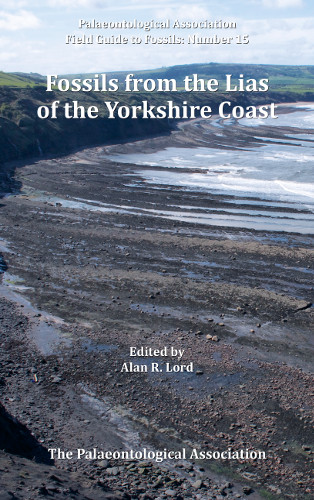Reg. Charity No. 1168330

The Lias (or Lower Jurassic) marine sediments seen in the cliffs and scars of the Yorkshire coast form the thickest exposed sequence of this age in England at 450m. These rocks are richly fossiliferous and have been studied since the early 19th century. The sedimentary sequence is important for providing a window into the stratigraphy of the North Sea basins to the east and north and also because it contains the Global Boundary Stratotype Section and Point (GSSP) for the base of the Pliensbachian stage. This field guide covers all major marine fossil groups from chronostratigraphically important ammonites to vertebrates, and terrestrial animals and plants washed into the Early Jurassic sea, reviews the early work and workers, and looks at the conservation of these important exposures.